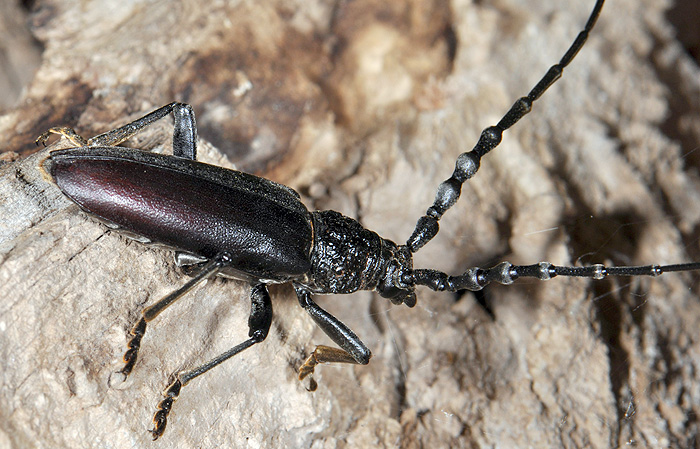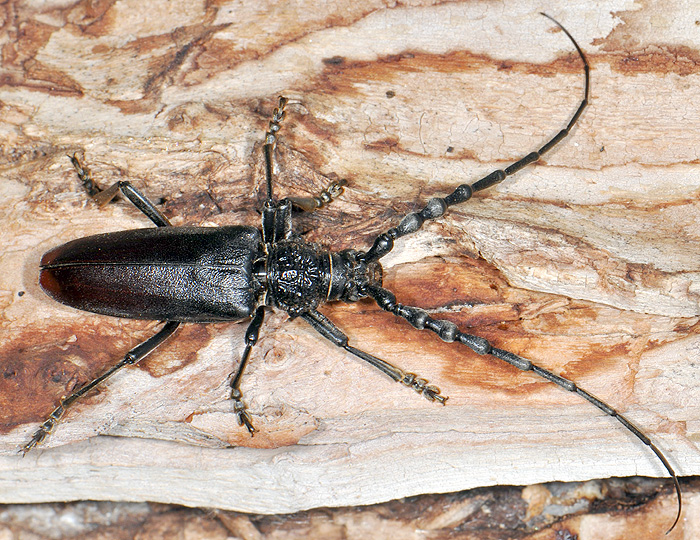Subfamilia: CERAMBYCINAE / Tribus: CERAMBYCINI

[Photo © M.Hoskovec]
Cerambyx dux develops in living or moribund trees and can therefore be regarded as a physiological pest. Larvae expel large quantities of well visible sawdust which can serve as a hallmark to locate attacked trees. The adults are active during the day but are very difficult to find.
Body length: 25 - 45 mm Life cycle: 3 - 4 years Adults in: May - July Host plant: polyphagous in fruit and ornamental trees or brushes (Prunus, Elaeagnus, Crataegus etc.) Distribution: Armenia, Bulgaria, Iran, Jordan, Lebanon, Macedonia, Syria, Turkey, Ukraine
The depicted beetles were collected on living oleaster (Elaeagnus angustifolia) in Karadut village (Nemrut Dagi National Park, Adiyaman province, Anatolia, SE Turkey).Collected by M.Hoskovec

[Photo © M.Hoskovec]


[Photo © M.Hoskovec]
Subfamilia: Cerambycinae Latreille, 1802
Tribus: Cerambycini Latreille, 1804
Genus: Cerambyx Linnaeus, 1758
Subgenus: Cerambyx Linnaeus, 1758
Species: Cerambyx (Cerambyx) dux (Faldermann, 1837)
